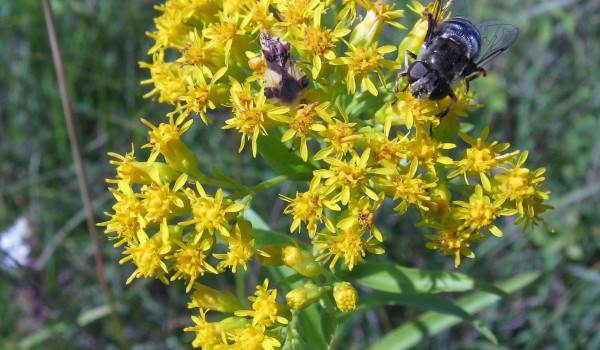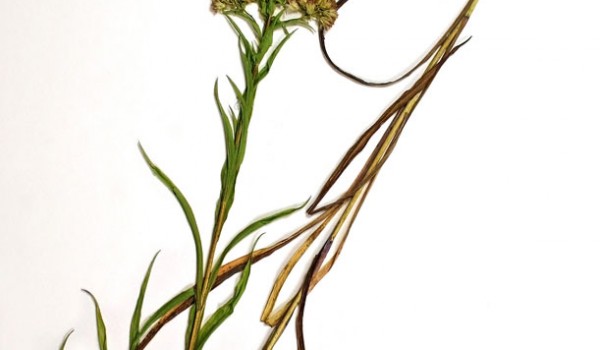Aster (Asteraceae)
Riddell's Goldenrod
Solidago riddellii Frank ex RiddellRiddell’s Goldenrod provides pollen to a wide range of insects including flies, bees, wasps, moths, and butterflies. Habitat loss, due to conversion of prairie to farmland and urbanization, is the main force driving population declines. This species is also sensitive to changes in moisture caused by drainage projects. It reproduces by wind-scattered fruits or by sending up shoots from an underground stem.
Flower Colour:
- Yellow
Flowering Season:
- Summer
- Fall
Flowering Months:
- August
- September
Canadian Rarity Status:
Protected under Canada’s Species at Risk Act and Manitoba’s Endangered Species Act. In Ontario it is a “special concern” species. The collection of wild plants and seeds is illegal on public lands.
Physical Appearance:
Riddell’s Goldenrod is an herbaceous perennial with an underground woody stem. It has multiple upright stems, and can grow to 1 m tall. Its’ long, narrow, tapered leaves curve downwards, and have 3 prominent veins. Lower leaves are larger and stalked, while upper leaves are smaller with no stalks. The small flowering heads occur in clusters of 30-several hundred. The outer (ray) flowers have short petals and the inner (disk) flowers are small and tube-shaped.
Similar Species:
Canada Goldenrod, Low Goldenrod (Solidago missouriensis Nutt.), Showy Goldenrod, Velvety Goldenrod (Solidago mollis Bartl.)
Gardening Notes:
Do not purchase wild-collected seeds or plants. Seeds and/or plants from nursery-raised stock may be available.
Canadian Distribution:
- Manitoba
- Ontario
Prairie Types:
- Tall Grass Prairie
Habitats:
- Ditches
- Prairies
- Railways
- Wetlands
Moisture Conditions:
- Moist
- Wet
Light Preference:
- Full Sun
Soil Preference:
- Calcareous
- Clay
- Loam
- Organic
Associated Pollinators:
-
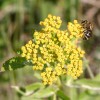 Andrenid Bees, Miner/Digger Bees (Andrenidae)
Andrenid Bees, Miner/Digger Bees (Andrenidae)
-
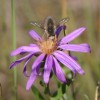 Bee Flies (Bombyliidae)
Bee Flies (Bombyliidae)
-
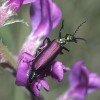 Blister Beetles (Meloidae)
Blister Beetles (Meloidae)
-
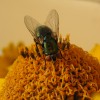 Blow Flies (Calliphoridae)
Blow Flies (Calliphoridae)
-
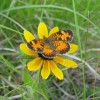 Brush-footed Butterflies (Nymphalidae)
Brush-footed Butterflies (Nymphalidae)
-
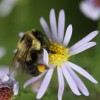 Bumble, Honey, and other Bees (Apidae (Subfamily Apinae))
Bumble, Honey, and other Bees (Apidae (Subfamily Apinae))
-
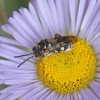 Cuckoo Bees (Apidae (Subfamily Nomadinae))
Cuckoo Bees (Apidae (Subfamily Nomadinae))
-
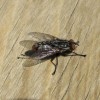 Flesh Flies (Sarcophagidae)
Flesh Flies (Sarcophagidae)
-
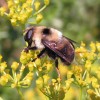 Flower Flies (Syrphidae)
Flower Flies (Syrphidae)
-
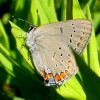 Gossamer-winged Butterflies (Lycaenidae)
Gossamer-winged Butterflies (Lycaenidae)
-
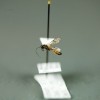 Ichneumonid Wasps (Ichneumonidae)
Ichneumonid Wasps (Ichneumonidae)
-
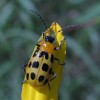 Leaf Beetles (Chrysomelidae)
Leaf Beetles (Chrysomelidae)
-
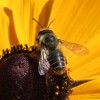 Leafcutter and Mason Bees (Megachilidae)
Leafcutter and Mason Bees (Megachilidae)
-
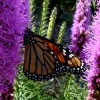 Milkweed Butterflies (Nymphalidae (Subfamily Danaiinae))
Milkweed Butterflies (Nymphalidae (Subfamily Danaiinae))
-
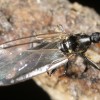 Minute Black Scavenger Flies (Scatopsidae)
Minute Black Scavenger Flies (Scatopsidae)
-
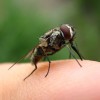 Muscid Flies (Muscidae)
Muscid Flies (Muscidae)
-
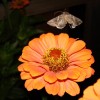 Owlet Moths (Noctuidae)
Owlet Moths (Noctuidae)
-
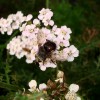 Parasitic Flies (Tachinidae)
Parasitic Flies (Tachinidae)
-
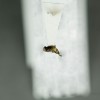 Picture-winged Flies (Otitidae)
Picture-winged Flies (Otitidae)
-
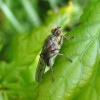 Scathophagid Flies (Scathophagidae)
Scathophagid Flies (Scathophagidae)
-
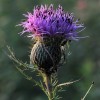 Shining Flower Beetles (Phalacridae)
Shining Flower Beetles (Phalacridae)
-
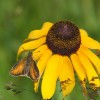 Skippers (Hesperiidae)
Skippers (Hesperiidae)
-
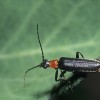 Soldier Beetles (Cantharidae)
Soldier Beetles (Cantharidae)
-
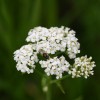 Soldier Flies (Stratiomyidae)
Soldier Flies (Stratiomyidae)
-
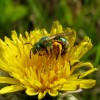 Sweat Bees, Halictid Bees and other Bees (Halictidae)
Sweat Bees, Halictid Bees and other Bees (Halictidae)
-
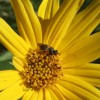 Thick-headed Flies (Conopidae)
Thick-headed Flies (Conopidae)
-
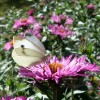 Whites, Sulfurs, Orangtips, Marbles (Pieridae)
Whites, Sulfurs, Orangtips, Marbles (Pieridae)
-
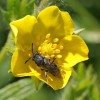 Yellow-faced Bees (Colletidae)
Yellow-faced Bees (Colletidae)
-
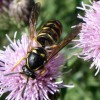 Yellowjacket, Potter, and other Wasps (Vespidae)
Yellowjacket, Potter, and other Wasps (Vespidae)






